Disclaimer: The Astell & Kern Acro L1000 was sent to us by Astell&Kern directly. This unit will be returned to AK after this review. Astell&Kern is not in any way related to Headfonia.
Astell & Kern
The South-Korean Astell & Kern is an iRiver owned company and it no longer needs an introduction as they are well known already in the personal audio world because of their series of high end portable players.
I admit I’ve been a big fan of their Digital Audio Players for years already now and an as a result we have reviewed quite a few of them:
AK100: https://www.headfonia.com/the-player-astell-kern-ak100/
AK120ii & AK240: https://www.headfonia.com/astelkern-ak120ii-ak240-reference-daps/
AK Jr: https://www.headfonia.com/astell-kern-ak-jr-who-you-calling-junior/
AK380: https://www.headfonia.com/review-astell-kern-ak380-momentary/
AK KANN: https://www.headfonia.com/review-astell-kern-ak-kann-power-to-the-people/
AK SP1000: https://www.headfonia.com/review-astell-kern-sp1000-impressive/
AK70II: https://www.headfonia.com/review-astellkern-ak70ii/
This time Astell&Kern is back with something different: a desktop sized AMP/DAC unit that not only drives all headphones, but speakers as well. In this review however, we’ll only be looking at the headphone outputs.
Acro L1000
The dedicated product page for the Acro L1000 can be found here. The Acro L1000 as said is a DAC/AMP unit and you can’t use it as a DAC or AMP only, it’s always the combination of both.
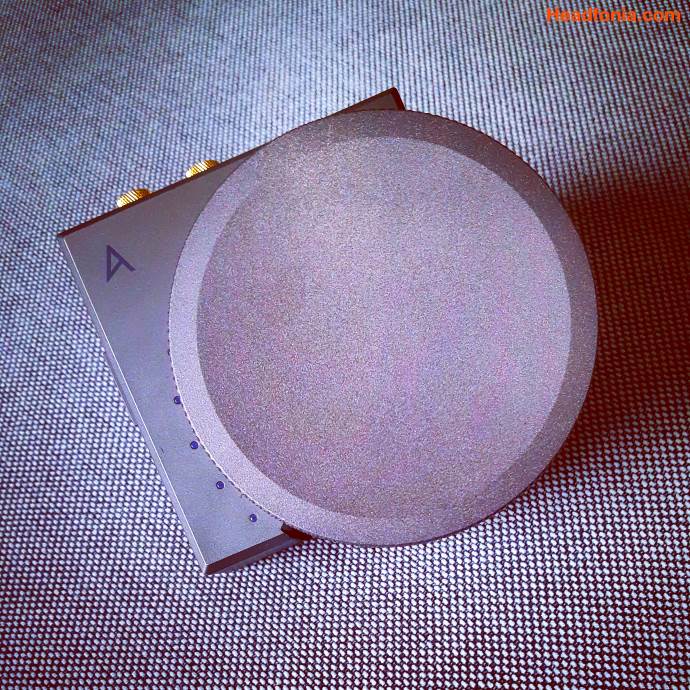
On the back there is a switch and you either have to choose the headphone outputs or the speaker output. The speaker connectors put out an impressive 15W per channel @4ohm. I haven’t run any headphones directly from the speaker taps, in case you’re wondering.
The Acro L1000 also comes with a set of filters you can activate for different audio preferences such as bass-boost and High-Gain but we’ll get back to that in a later chapter.
DAC
The DAC chips used in the L1000 are the AK4490 and they come in a dual DAC configuration for a perfect balanced output. The AK4490 is the same DAC chip you can find in the Astell&Kern AK380 player. The former flagship’s chip is still a very good one, even though AK switched to the AK4497EQ chip for their new flagship DAP, the SP1000.
The AK4490 allows PCM playback up to 32bit/384kHz and native DSD 256 playback is supported. In order for the L1000 to work with Windows, you first need to install the Windows driver. You can find that one here.
Inputs & Outputs
There is only one input on the Acro, and that is a micro usb-port. As said, you always have to use the L1000’s DAC (input) and so this is your one and only input. The good news is that you can use this input not only from your laptop/pc, but you can also hook up your AK DAP and use their OTG function to feed the Acro L1000 with its digital signal. The only downside here is that no OTG USB cable is included in the package.
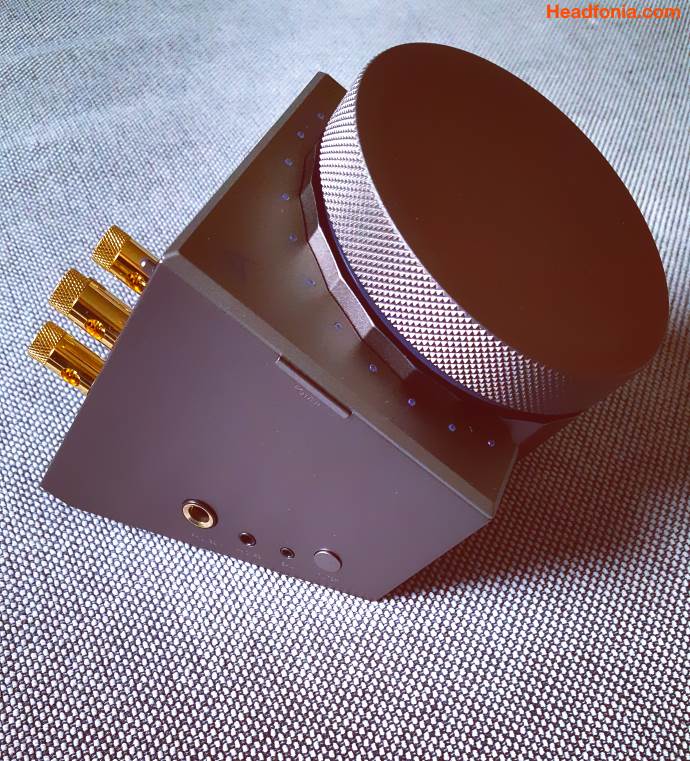
I have used the L1000 with my SP1000 and AK70II as source and the connection worked straight from the first time. According to Astell, the L1000 will be compatible with the AK380, AK320, AK300, KANN, AK70, AK70 MKII and SP1000. Astell&Kern doesn’t even mention if it will work with different brand players. I have tried getting it to work with Cayin’s N5ii and while you do get sound immediately, it’s bleeping and ticking all over. So it for sure isn’t guaranteed that the Acro L1000 works with any other DAP using USB OTG.
While you only have one input you have a very impressive number of outputs. You can connect your headphones to four different outputs. There of course is the regular single ended 3.5mm and 6.3mm output but you also get two balanced outputs. As it’s AK you get a 2.5mm balanced output, together with a 4 pin XLR output. There’s no 4.4mm balanced output.
Unlike other headphone amplifiers, the ACRO L1000 features speaker binding posts offering a maximum audio output of up to 15W per channel at 4 ohms. AK has actually developed a set of speakers specifically for this DAC/AMP combo, called the Acro S1000. I did quickly try the L1000 with my Pioneer S-A4SPT-VP speakers but there just wasn’t enough power for them. If you do plan on using the L1000 with your speakers, do make sure to check their impedance before you buy it.
Layout
On top the L1000 you have the huge volume wheel/control which is impossible to miss. Around that wheel you circle-wise have series of LED’s. The first LED on the left right displays the sound setting you selected (see later), all the other LEDS that follow this one, are used to show you the output volume.
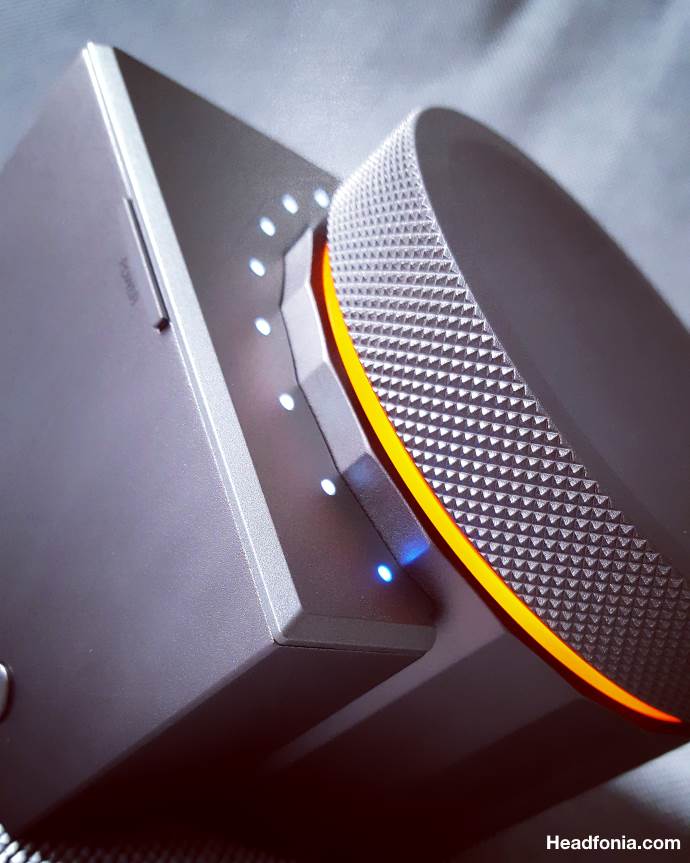
On the left side of the unit you have the slim power button and the L1000 immediately powers on when touching the button. To turn the unit off, you have to hold in the button for about 4 to 5 seconds. On the bottom of the left side you have the 6.3, 3.5 and 2.5mm outputs.
On the back you from top to bottom have the 4-pin XLR balanced output, the speaker on/off switch, the speaker bindings, the micro-usb input and the power connector. There’s nothing on the right side while the bottom has an anti-slip rubber that does a pretty good job.
The unit itself is reasonably small and because of its unique design takes up little space on your office desk. The Acro L1000 only measure 112.87 mm x 160 mm x 112.75 mm and it weighs about 920.7g. That’s fairly small for a high-end AMP/DAC unit.
The review continues on the next page of this article, right HERE.







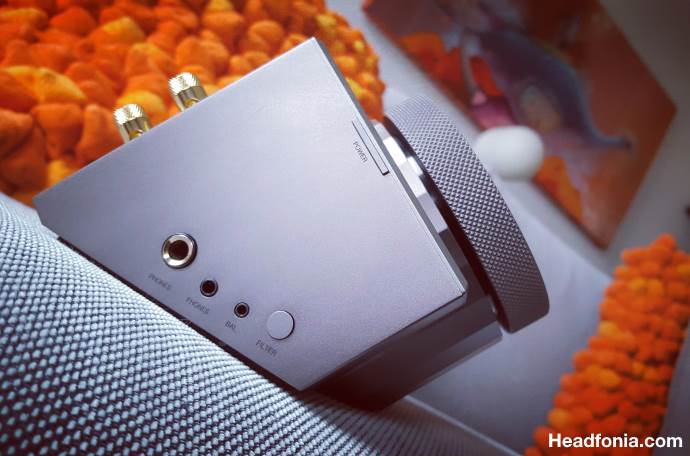

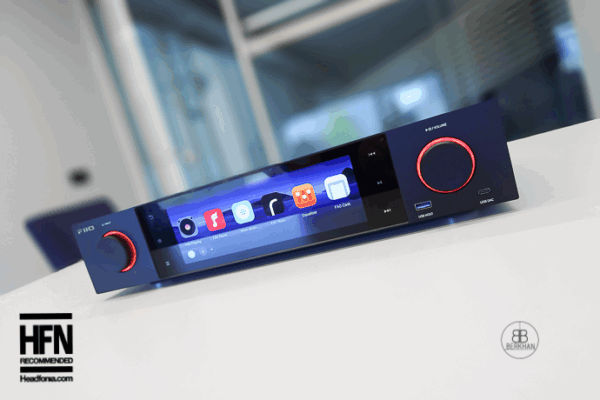
Ryan
Hi, can connect L1000 to powered monitor like Adam F5?